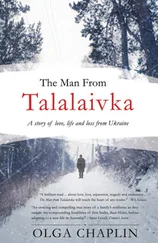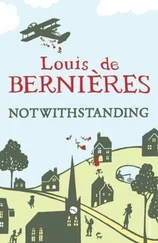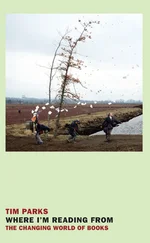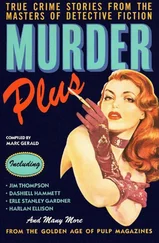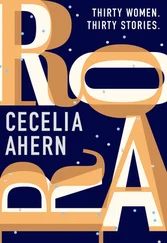From the prison building you can go outside into its large courtyard which, we can tell from photos, remains eerily as it was in 1941. It is a large space overlooked by middle-class apartment blocks in the surrounding streets and bounded on one side by the prison wall, punctured with its small windows. The central and most important part of the museum is devoted to what happened in the building and the courtyard between June 22 and 28, 1941. Lonskoho, also spelled Lontskoho and known as Lonski in Russian or Lackiego in Polish, was one of three prisons in the city. As the Nazis and several hundred Ukrainian nationalists in the German Nachtigall Batallion approached, the Soviets evacuated a few prisoners and released a few more, but in an orgy of blood they went on to murder thousands across Galicia—as many as 100,000 in all of the areas they retreated from. A brief Ukrainian uprising halted the killings in Lviv, but the NKVD returned to finish the job before fleeing. According to the museum’s figures 1,681 were murdered in Lonskoho and up to 3,391 in total in the three Lviv prisons, though numbers vary quite dramatically, even in explanations given at the museum.
When the Soviets had arrived in Lviv in 1939 they concentrated on arresting Poles, intellectuals and anyone connected to the Polish military or security services. Large numbers of Jews, regarded as “class enemies,” were also arrested. By 1941 many of those prisoners had been dispatched eastward to the Gulag. No one knows the exact numbers but, according to the museum’s calculations, about half the dead of the June massacre in Lonskoho were Ukrainian, a quarter Polish and the rest Jews and others. For the Nazis the massacres were a godsend. For twenty-four hours no one was in charge, but as the Germans arrived they secured the buildings. Then Jews were rounded up to exhume corpses from the fresh mass graves and also to bring out bodies from the cells. The Jews were responsible, said the Nazis, because many of them had worked for the NKVD. An explanatory note acknowledges that Jews were used in this way, as it does that Poles and Jews were killed here too. But two things are clear. This is above all a shrine to the UPA and Ukrainian nationalists; everyone else, while not completely unacknowledged, is more or less forgotten. What is totally missing, however, is a full account of what happened when the Jews were brought here after the NKVD had gone.
Edmund Kessler was a Lviv Jewish lawyer who, with his wife, was hidden by Poles during the war and wrote an account of this period, including these few days at the end of June and beginning of July. “The Ukrainian mob,” he wrote, “encouraged by the behaviour of the Germans is… prodded by rumours spread about the bestial tortures Jews supposedly inflicted on arrested political prisoners.” Pogroms and murders began.
Beaten, whipped, and tortured, the inhabitants are dragged into the streets. Hiding in the cellar or attic does not help. Gangs of Ukrainian children inspect the nooks and crannies of houses and apartments and point out hidden Jews. The violence and fury of the attackers grow. No one is spared… Tattered masses of tortured Jews arrayed in military formation under the supervision of German soldiers, police and Ukrainian militia are led to the prisons in sight of crowds.
At Lonskoho “the wall is lined by German guards and on both sides of the gate stand rows of Ukrainians wearing the uniforms of Soviet militiamen.” Quite possibly these were former Soviet policemen quickly adapting to the new reality. The crowd threw rocks at the Jews who then retrieved the corpses. Several were shot.
The Ukrainian servants of the Germans dishonor these corpses, kick them, and spit on them, but not before searching them thoroughly for anything of any value. Despite the duration of the executions, the public’s enthusiasm does not wane. The onlookers encourage them with shouts to become even more brutal. What ensues is competition of hitting the victims and kicking the corpses. Their crescendo of curses and shots silence the death rattle of the dying on this devilish day of slaughter.
The pogrom of those days is recorded in many photos and films. Several show women stripped naked or in their underclothes being abused or chased by locals. These pictures are now being used as part of Russian propaganda, to demonstrate that “the fascists are back.” Some 4,000 are believed to have died then, killed by both the Germans and Ukrainian thugs.
At the end of July another pogrom was organized which was given the name of the “Petliura Days,” for Symon Petliura, the exiled head of the Ukrainian People’s Republic. Another 1,000 or so died in this massacre. In 1926 Petliura was assassinated in Paris by a Jewish anarchist in revenge for pogroms carried out by Petliura’s forces during the civil war. Many Jews, but not all, regarded the assassin as an avenging angel and hero. Others argued that Petliura was not anti-Semitic and had tried to stop the pogroms committed by his men who were out of control. The Paris trial of the assassin Sholom Schwartzbard (1886–1938) was a cause célèbre, not least because he was acquitted although he confessed to the murder. The affair did much to deepen the gulf between Jews and Ukrainians and fuel the belief in “Judeo-Bolshevism,” because Ukrainians claimed he was a Soviet agent. In 1967, Schwartzbard’s remains were reinterred in Israel.

Ruslan Zabilyi, in a padded cell in the Lonskoho Street jail museum of which he is director. Lviv, November 2014.
The pogrom, in the wake of the NKVD massacre, is not the only part of the history of Lonskoho that is not commemorated. For example, members of the Polish resistance against the Nazis are also forgotten. Ruslan Zabilyi, the young historian and director of the museum, who walked me around, showing me everything from the Polish-era drinking fountain to the Soviet padded cells, is defensive about charges that he has created a shrine to the UPA. Those who have attacked him, he argued, sometimes want to blacken the name of Ukraine or are pro-Russian. He said “it is partially true” that the whole story is not here, but accusations against him are unjust. “We try to speak about everybody but we lack information and this is exactly what I am doing—looking for information.” With regard to Polish prisoners, “all the files were taken to Moscow and I doubt we will ever see them.”
One of Zabilyi’s critics is Tarik Cyril Amar, a historian at Columbia University, who has argued that the modern “glorification of Ukraine’s, especially western Ukraine’s and Lviv’s, Second World War ethnic nationalists,” means the
suppression of the experiences of Lviv’s two other major war-time ethnic groups of Poles and Jews, in particular where remembering them would disturb the glorification of Ukrainian nationalism or implicate ethnic Ukrainians in morally reprehensible behavior, such as collaboration with the German occupiers, participation in the Shoah or the ethnic cleansing of Poles. The essence of this defensive striving for retrospective innocence has been summarized concisely by a former aide of Roman Shukhevych [one of the UPA leaders]: “Our Ukrainian nationalism is pure (chystyi) and self-sacrificing (zhertovnyi).”
What is significant, though, is that while this was definitely the trend in the 1990s and especially between 2005 and 2010 during the presidency of Viktor Yushchenko, the position changed when Viktor Yanukovych became president in 2010. He began putting the brakes on this interpretation of history because—being Russian-oriented and from the east—none of this sat well with his constituents or worldview. Yushchenko’s awards of posthumous honors to Shukhevych and Bandera were revoked and the place of the Holodomor in Ukrainian history and outlook was downgraded, which is to say it was not denied but placed in the context of a famine that stretched well beyond the borders of modern-day Ukraine.
Читать дальше


